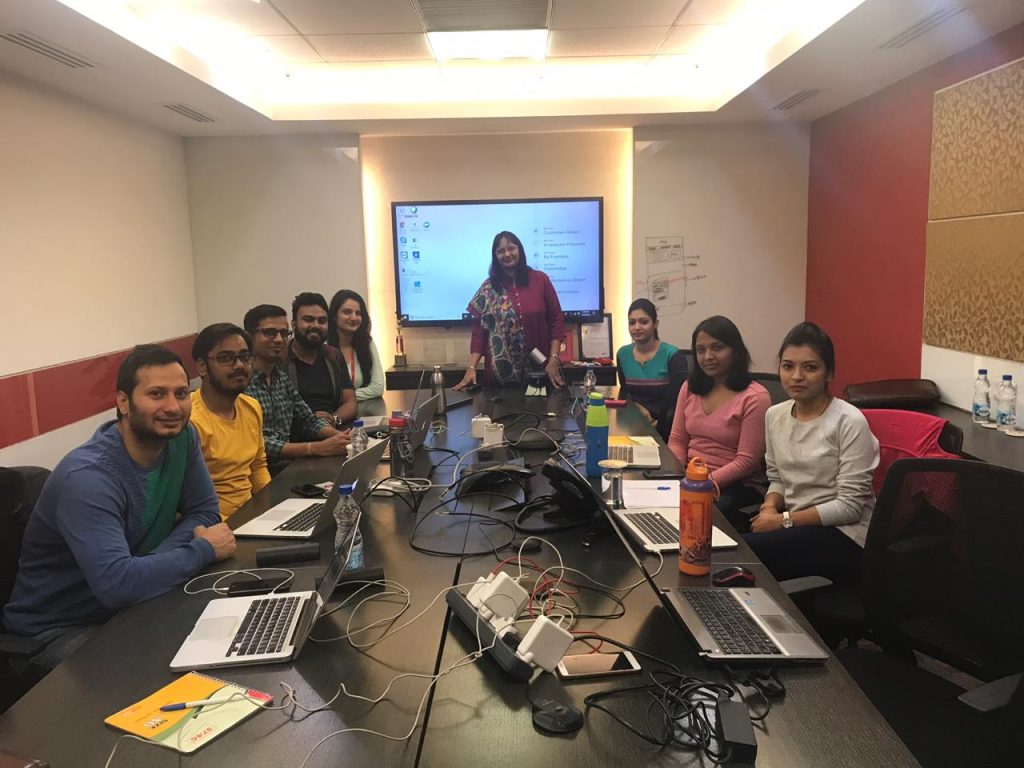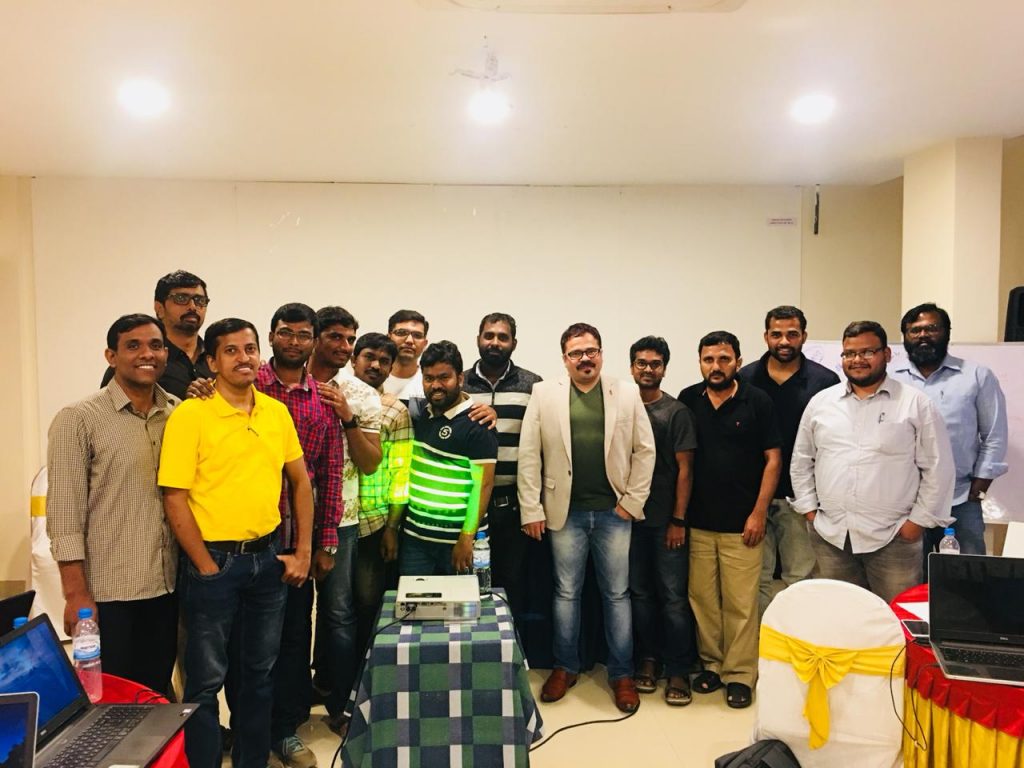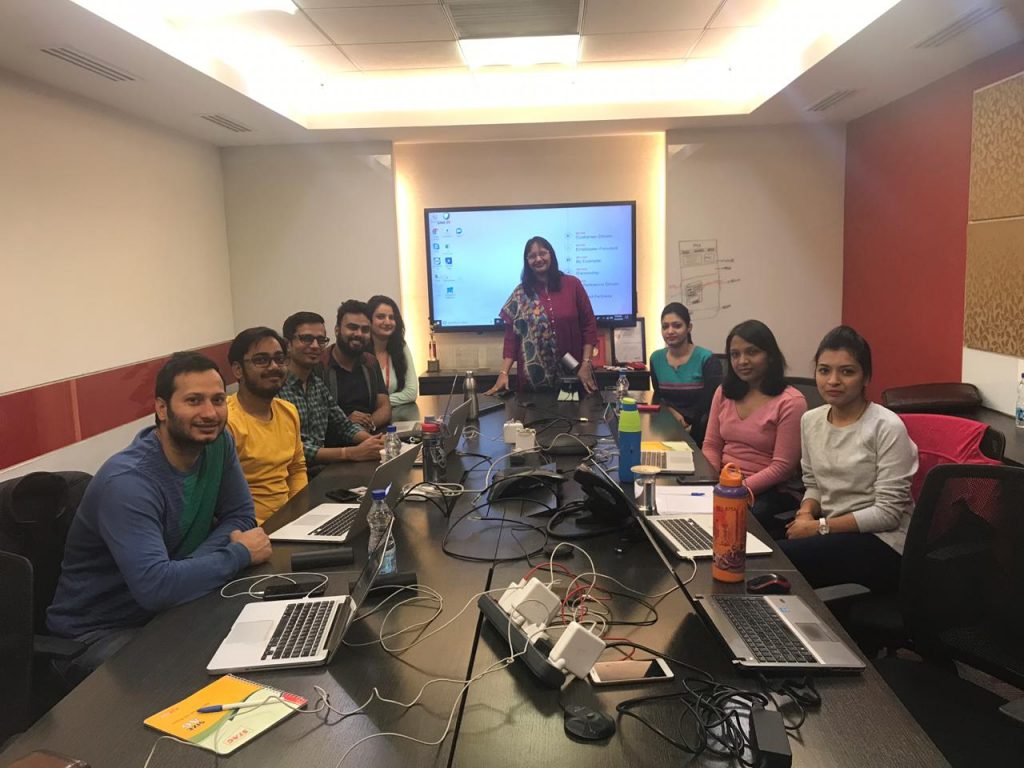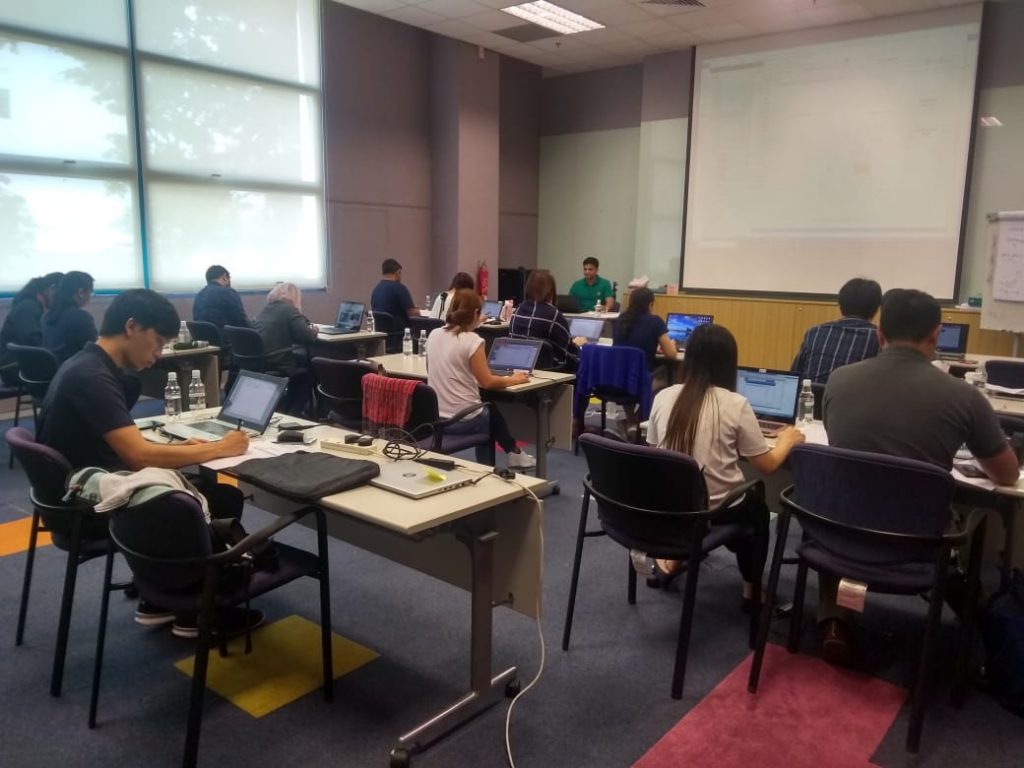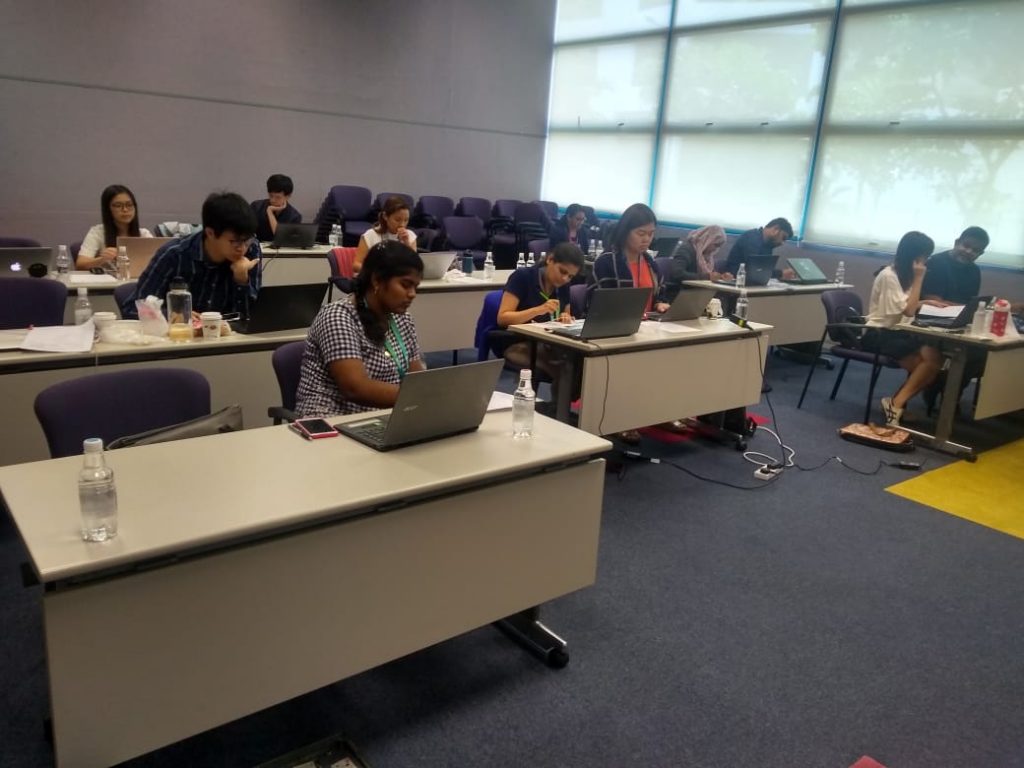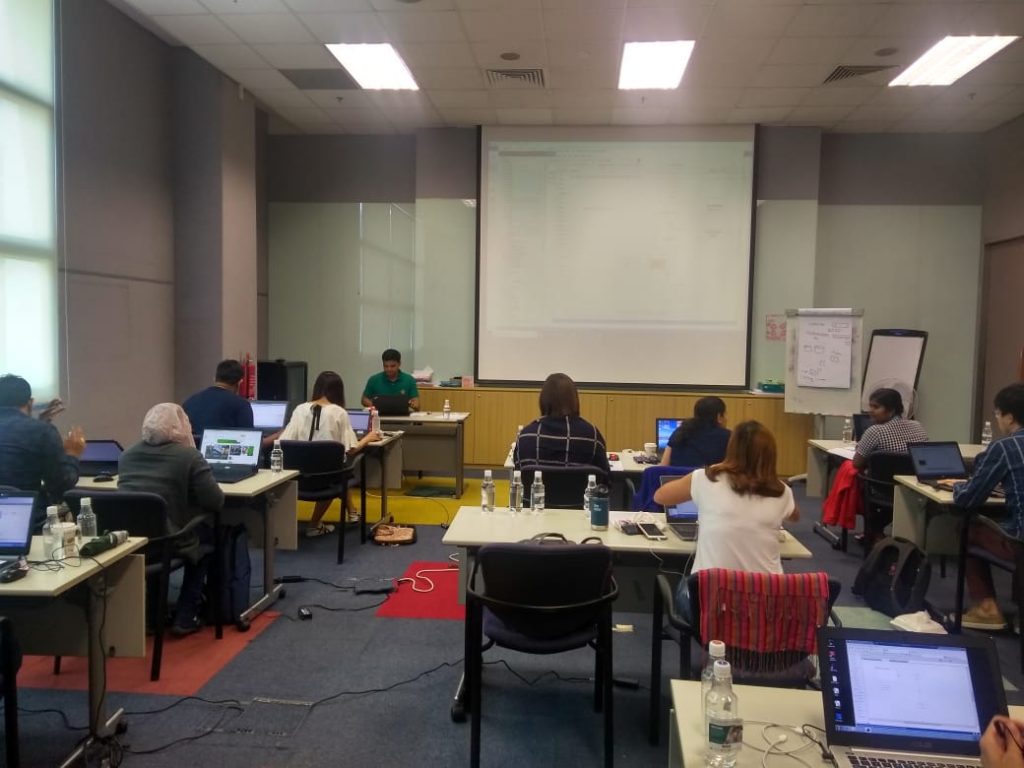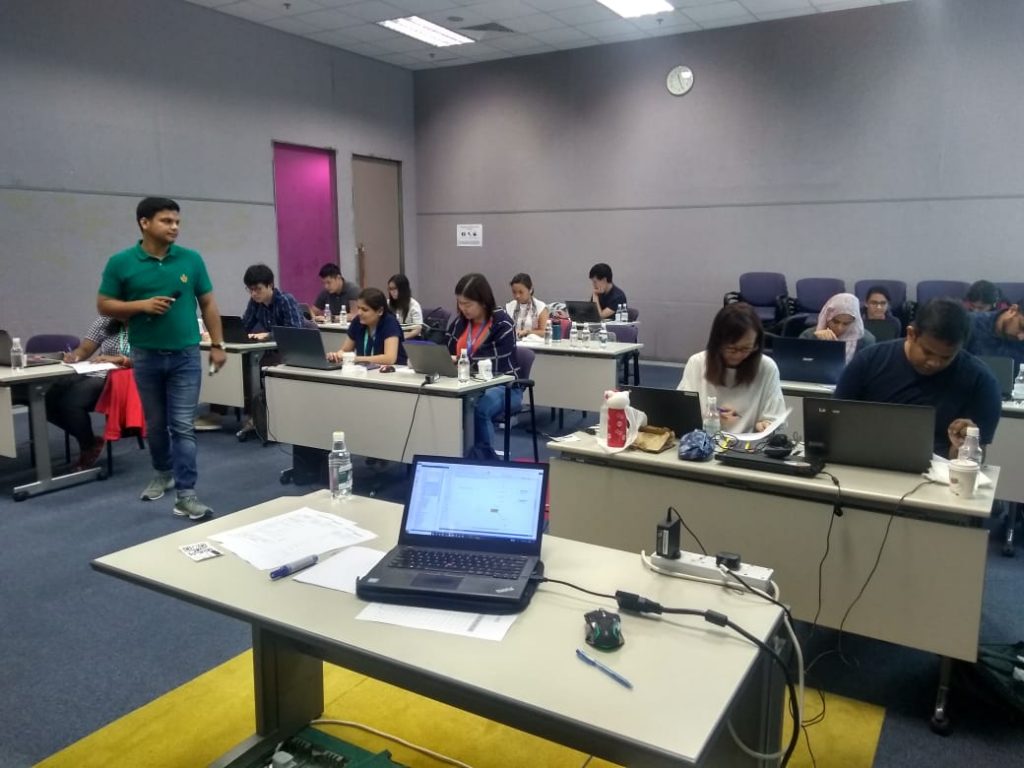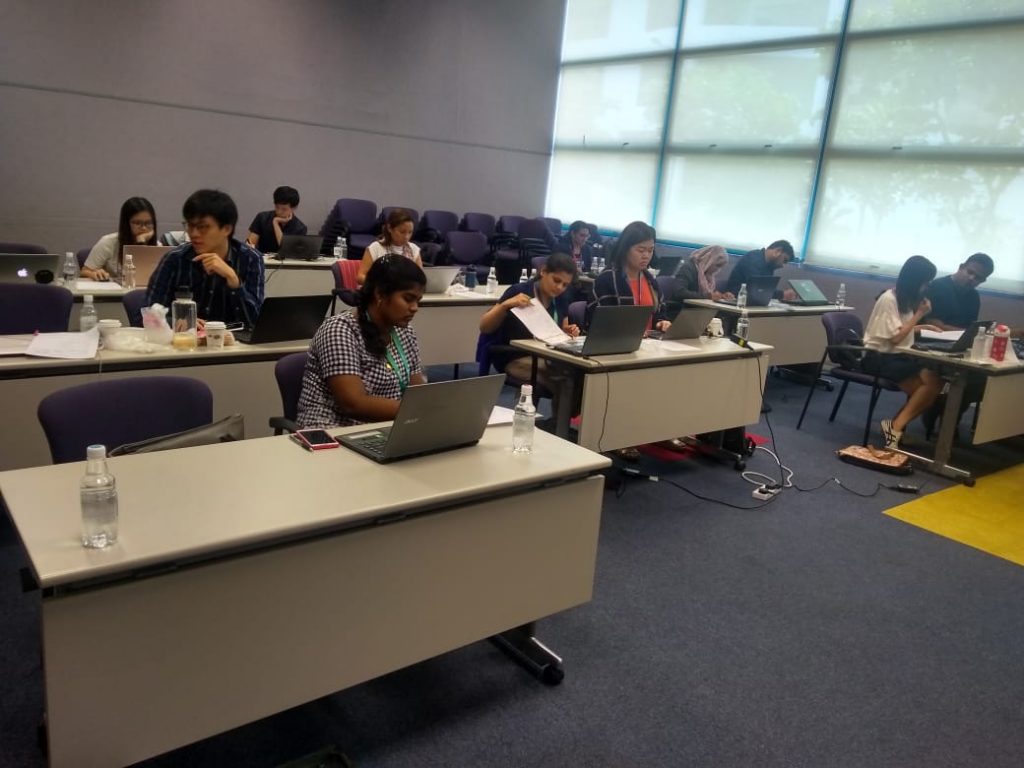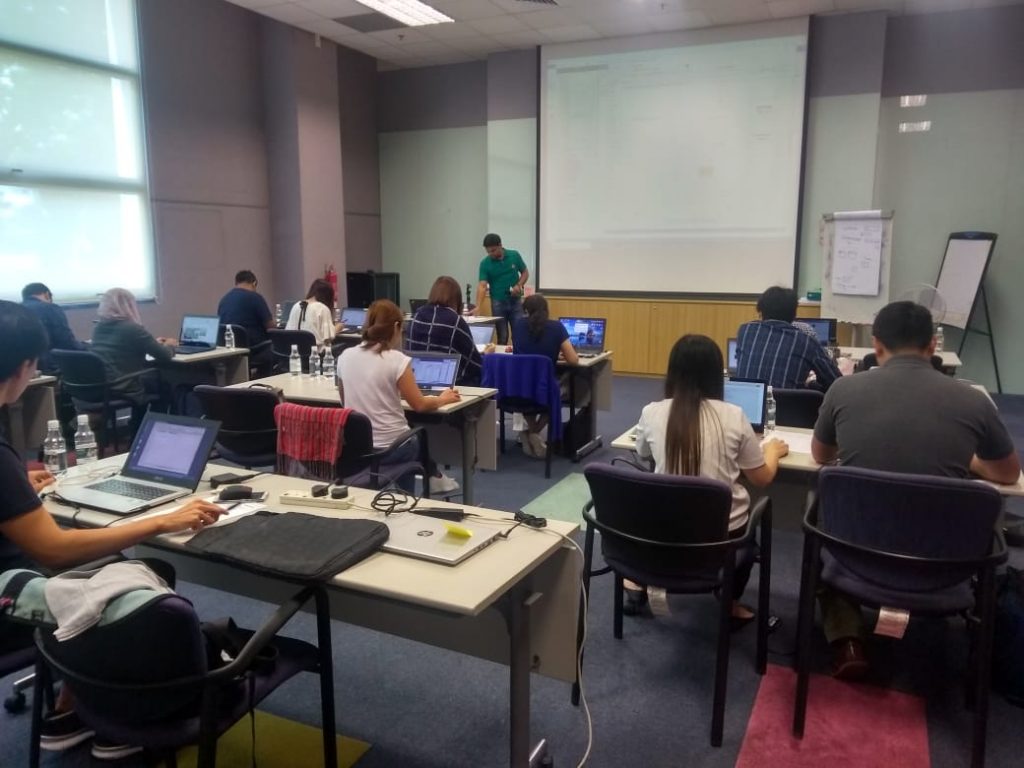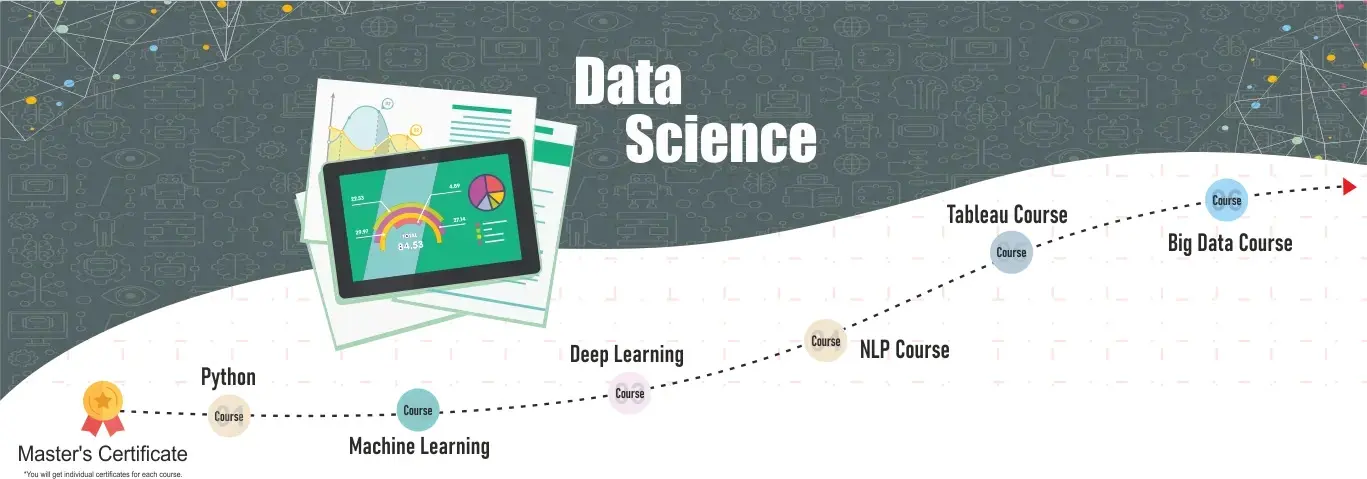
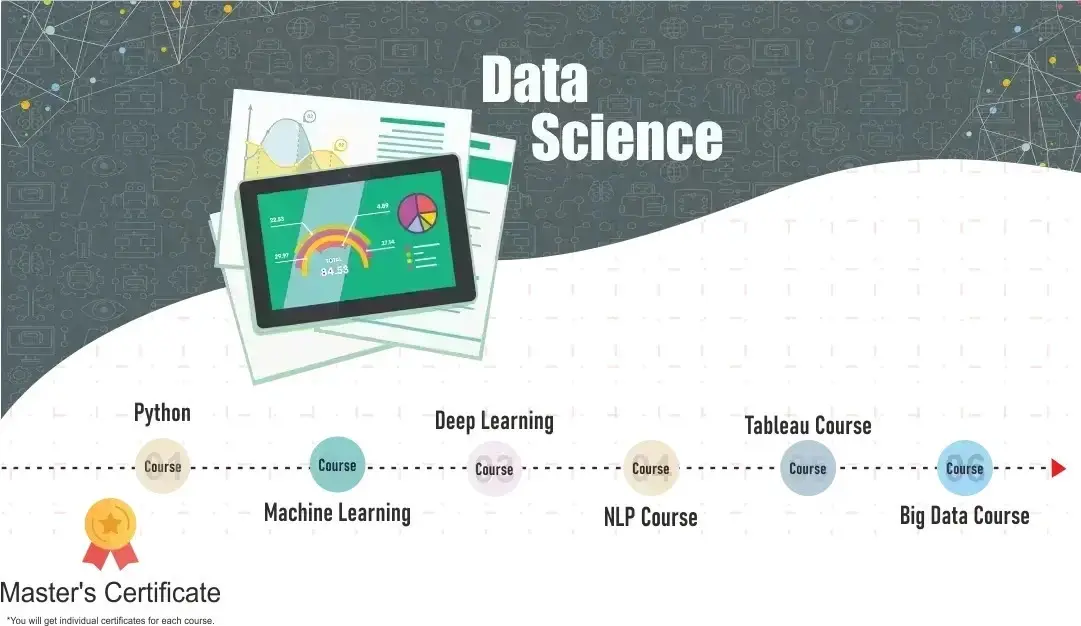
Live Online Classes Set Noticed by
100 hiring companies
Built on datasets of Amazon,Comcast
Live Online Classes by industry Experts
Get Noticed by top hiring companies
The Boulevard Mid Valley City, Lingkaran Syed Putra 59200 Kuala Lumpur
Data Science is among the most preferred career right now. with it's demand constantly increasing . all the leading training institude have started offering courses focused on developing data science skills among being and aspiring professionals.
The program requires an exposure to data science concepts in combination with some work experience in analytics.
Professional wishing to succeed in this dta science course should have basic knowladge of statistics Basic understanding of any programming language.
Sky the limits for data science professionals. Once the course is completed,you can expect a promissing position in any industry that run on analytics.
Delivered more than 150 corporate batches at companies like Citi Bank, Royal Bank of Scotland, UOB Banks Singapore, Capgemini, United Health Group, Wirpo, IBM and many more
Python Certification will assist you in mastering the concepts of Python and its libraries like SciPy, Matplotlib, Scikit-Learn, Pandas, NumPy, Lambda functions, and Web Scraping. Learn how to write Python Programming for Big Data systems such as Spark and Hadoop.
Learning Objective:
Learn about the history of Python and its various uses. Learn to use interpreters and also learn about how Python scripts work on UNIX/Windows.
Topic Covered:
Hands-on: Learn about interpreters and Python Script.
Learning Objective:
Learn how to install Python distribution - Anaconda. Learn basic data types, strings & regular expressions.
Topic Covered:
Hands-on: Install Anaconda - Python distribution
Learning Objective:
In this module, you will learn to convert messy text into something useful.
Topic Covered:
Hands-on: Write Python code to implement string operations.
Learning Objective:
Learn the various data structures that are used in Python.
Topic Covered:
Hands-on: Write Python Code to understand and implement Python Data Structures.
Learning Objective:
Learn all about loops and control statements in Python.
Topic Covered:
Hands-on: Write Python Code to implement loop and control structures in R.
Learning Objective:
Write user-defined functions in Python. Learn about Lambda function. Learn the object oriented way of writing classes & objects.
Topic Covered:
Hands-on: Write Python Code to create your own custom functions without or with arguments. Know how to call them by passing arguments wherever required.
Learning Objective:
Learn to build modules and install packages.
Topic Covered:
Hands-on: Write Python Code to create modules and execute them.
Learning Objective:
Learn about Regular Expression Objects, subexpressions, tips and tricks to implement while you code.
Topic Covered:
Hands-on: Write Python Code to use Regular Expression and match pattern, parse data and so on.
Learning Objective:
Gain knowledge on OOPs to code easily and efficiently. Learn to construct classes and define objects."
Topic Covered:
Hands-on: Write Python code to construct a class and define objects.
Learning Objective:
Study Use Cases to explore Python
Topic Covered:
Hands-on: Use cases covering conditional statements, functions, classes, modules, regular expressions.
Machine Learning Course will make you an expert in machine learning, a form of artificial intelligence that automates data analysis to enable computers to learn and adapt through experience to do specific tasks without explicit programming.
Topic Covered:
Topic Covered:
Topic Covered:
Topic Covered:
Topic Covered:
Topic Covered:
Topic Covered:
Topic Covered:
Data Science with R certification course makes you an expert in data analytics using the R programming language. This online training enables you to take your Data Science skills into a variety of companies, helping them
Topic Covered:
Topic Covered:
Topic Covered:
Topic Covered:
Topic Covered:
Topic Covered:
Topic Covered:
Topic Covered:
Topic Covered:
Topic Covered:
Topic Covered:
Topic Covered:
Data Science with R certification course makes you an expert in data analytics using the R programming language. This online training enables you to take your Data Science skills into a variety of companies, helping them
Topic Covered:
Learning Objective:
Learn about the interaction between computers and human beings which gives computers the ability to understand human speech with the help of machine learning. Understand the concept behind tokenization and normalization
Topic Covered:
Hands-on: Apply various similarity measures to strings using NLTK
Learning Objective:
Understand the preprocessing tasks or the computations that can be performed on natural language text. Learn about the ways to calculate word frequencies, the Maximum Likelihood Estimation (MLE) model, interpolation on data, and so on
Topic Covered:
Hands-on: Implement Maximum Likelihood Estimation in NLTK and perform language modelling
Learning Objective:
Learn about stemming and lemmatization, stemmer and lemmatizer for non-English languages, developing a morphological analyzer and morphological generator using machine learning tools, search engines, and many such concepts
Topic Covered:
Hands-on: Perform preprocessing on the original text in order to implement or build an application. Implement stemming, lemmatization, and morphological analysis and generation in NLTK
Learning Objective:
Understand the process of finding whether a character sequence, written in natural language, is in accordance with the rules defined in formal grammar. Also, learn about the process of breaking the sentences into words or phrase sequences and providing them a particular component category (noun, verb, preposition, and so on)
Topic Covered:
Hands-on: Implement Context-free Grammar, Probabilistic Context-free Grammar, the CYK algorithm and the Earley algorithm
Learning Objective:
Understand the process of determining the meaning of character sequences or word sequences which may be used for performing the task of disambiguation
Topic Covered:
Learning Objective:
Understand the process of determining the sentiments behind a character sequence. It may be used to determine whether the speaker or the person expressing the textual thoughts is in a happy or sad mood, or it represents a neutral expression
Topic Covered:
Learning Objective:
Understand the process of retrieving information (for example, the number of times the word "Analysis" has appeared in the document) corresponding to a query that has been made by the user
Topic Covered:
Hands-on: Implement text summarization, question-answering systems, and vector space models
Learning Objective:
Understand the process of determining contextual information that is useful for performing other tasks, such as anaphora resolution (AR), NER, and so on
Topic Covered:
Hands-on: Use NLTK to implement first order predicate logic using UML diagrams
Learning Objective:
Learn to analyze whether a given NLP system produces the desired result or not and the desired performance is achieved or not which may be performed automatically using predefined metrics, or it may be performed manually by comparing human output with the output obtained by an NLP system
Topic Covered:
Mildaintrainings Tableau Training - This hands-on, instructor-led course teach you how to transform raw data into interactive and shareable dashboards using Tableau. Our Tableau Course covers the necessary analytical skills to Advanced data visualizations By incorporating real-world use-case scenarios, labs, and exercises. Some of the topics included are Data Blending, Data Mapping, Graphs, creation of charts, and LOD expression by using different versions of Tableau, such as Tableau Desktop, Tableau Reader, and Tableau Public. You also learn the process to integrate Tableau with R and Big Data in this Tableau certification course.
Topic Covered:
Topic Covered:
Topic Covered:
Topic Covered:
Topic Covered:
Topic Covered:
Topic Covered:
Topic Covered:
Topic Covered:
Topic Covered:
Topic Covered:
Topic Covered:
Topic Covered:
The core objective of this course is to get a comprehensive understanding of large volumes of data, including structured, unstructured, text, social media, video, audio, image, bot, and device log data and mastering technologies used to store, manipulate, analyse, and derive insights using statistics, Machine Learning algorithms, and Big Data tools.
Topic Covered:
Topic Covered:
Topic Covered:
Topic Covered:
Topic Covered:
Topic Covered:
Topic Covered:
Topic Covered:
Topic Covered:
Topic Covered:
Topic Covered:
Topic Covered:
Topic Covered:
Topic Covered:
Topic Covered:
Topic Covered:
Topic Covered:
Topic Covered:
Topic Covered:
Topic Covered:
Our Data Scientist Master's program is exhaustive and this certificate is proof that you have taken a big leap in mastering the domain.
The knowledge and Data Science skills you've gained working on projects, simulations, case studies will set you ahead of the competition.
Talk about it on Linkedin, Twitter, Facebook, boost your resume, or frame it - tell your friends and colleagues about it.
Call us At
Lorem ipsum dolor sit amet, consectetur adipisicing elit. Eaque illo exercitationem, similique provident ea molestiae, officia harum est hic impedit.
Ans. Data science doesn't need a word of mouth today. It has become so popular that freshers, as well as professionals, don't think twice before investing in a course that helps them bag a job in the area. The need for data science professionals lies in the very fact that different aspects of human life are transformed into data using electronic devices. You may not feel it but it happens, all the time. And over the years, this data has only become instrumental in making business decisions. They need a team to handle and arrange the large pool of data in a centralized manner. This makes data science a hot career option to opt for.
Ans. The answer to this question might vary from company to company but mostly it is a yes. As data scientists are considered to be decision-makers, they are among the most valued employees of any company. The same reflects in the salary they get. Apart from the salary, there might be lucrative incentives, depending on the company and its position in the market. In a nutshell, data scientists get handsome packages that most professionals dream of. As per a report, by the end of 2030, 50% of the total Indian economy is estimated to be constituted alone by the data-driven digital market. Therefore, it can be said that this decade will belong to data scientists and the same will be notable in their paychecks.
Ans. To become a successful data scientist, you must have all the essential skills for pursuing data science as a career. The one-line answer might be something like, join a course and learn these skills but that is not the complete answer. The secret lies in having basics clear. In case it is not, there is nothing to worry about. You must have an idea of what subjects to focus on and you're set. The first step is to revise mathematics concepts with the main focus on linear algebra, calculus, matrix theory, statistics, probability analysis, and numerical analysis but avoid overdoing. In addition, you can start reading data science blogs, learn fundamentals, and then think of joining a data science program at a reputed training institute. Many training centres in NCR offer job-oriented data science courses.
Ans. Slowly but steadily, data science has been covering all industries which set the bar even higher. Employers expect professionals with a broader set of skills so that they can easily adapt to the fluctuating job demands whenever needed. The essential skills for data science professionals include coding, statistics, and domain knowledge. Coding skills include a thorough knowledge of R/python, preferably python with the ability to reuse codes, coding tests on SQL as 99% of the companies use it, excellent knowledge and command over Excel, and sound Tableau skills. Apart from this, data scientists must be well versed in maths, stats, ML algorithms, and domain knowledge.
Ans. The main role of data scientists is to extract useful insights which is also the challenging part. As a data scientist, you are responsible for managing a large pool of data in a centralized folder. This structured data will further be used for business growth by improving customer experience. Considering the gap present in the market, the demand for skilled data science professionals is constantly growing as they are the ones who can handle these demands. To acquire new customers and improve their experience with a brand or product, the company needs to personalize customer experience to a completely different level by gathering useful insights. Considering the large amounts of data, it can be said that a data scientist can spell success or failure for a brand based on his or her expertise. Therefore, the biggest challenge is honing the skill of creating insights.
Ans. The world is running on data and it is evident that data science has become an integral part of the world economy. As the role of data is not going to shrink, the future of data science looks unbelievably bright. Data science builds brands these days. Useful insights help companies read their consumer behavior and create products that add value to their lives. As customers can make or break a brand, customer data plays an essential role and will continue to do the same in the future. Another great part of being a data science professional is being able to work in switching roles in various industries. Data science covers almost all sectors and is constantly growing. This fact positions it among the most secure career options of this decade.
Ans. Data science and statistics both are used for analyzing data which sometimes makes people confused over their similarities and differences. The first thing to understand here is, they are not completely different. However, there is always a fine line that separates them from one another. Both analysis techniques might be used for data analysis but they differ in terms of the amount of data that can be handled. While data science can deal with an enormous amount of data, the statistics technique usually focuses on small chunks. Data science uses a predictive model while statistics uses a simple linear model for solving problems. Both the techniques might also vary in terms of the background study required, problems they solve, and potential applications.
Ans. Preparing for an interview depends on the position you're applying for. While freshers may do great by simply revising and practicing machine learning algorithms, python programming, and impressive presentation, for a position like that of a project manager, the level of preparation must be different. Apart from the required technical skills, the interviewer will expect you to have commendable experience in your domain and you must be able to independently handle projects. Here are some interview questions that will help.
Ans. Yes, the program is available online. In fact, following the pandemic, we have made all our programs available online. Once you register yourself, you can pay using any of the following modes:
In case of any doubt, you can always reach us using the Contact Us tab.


















